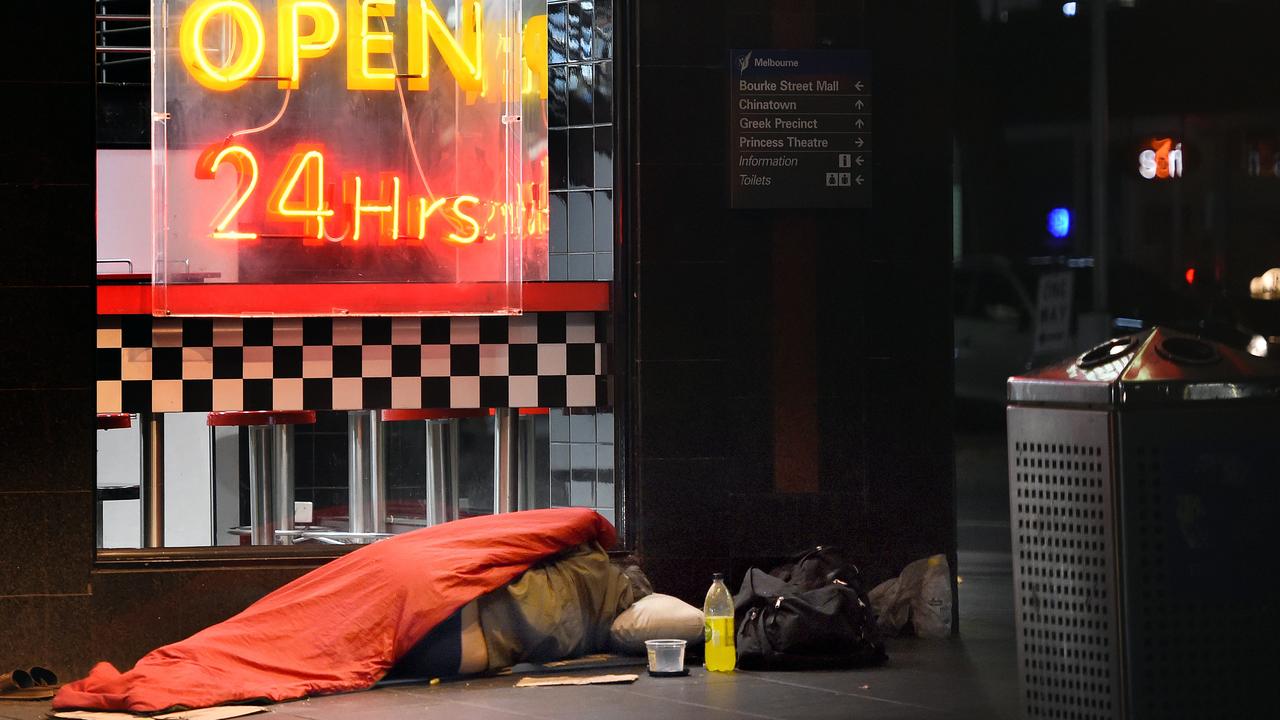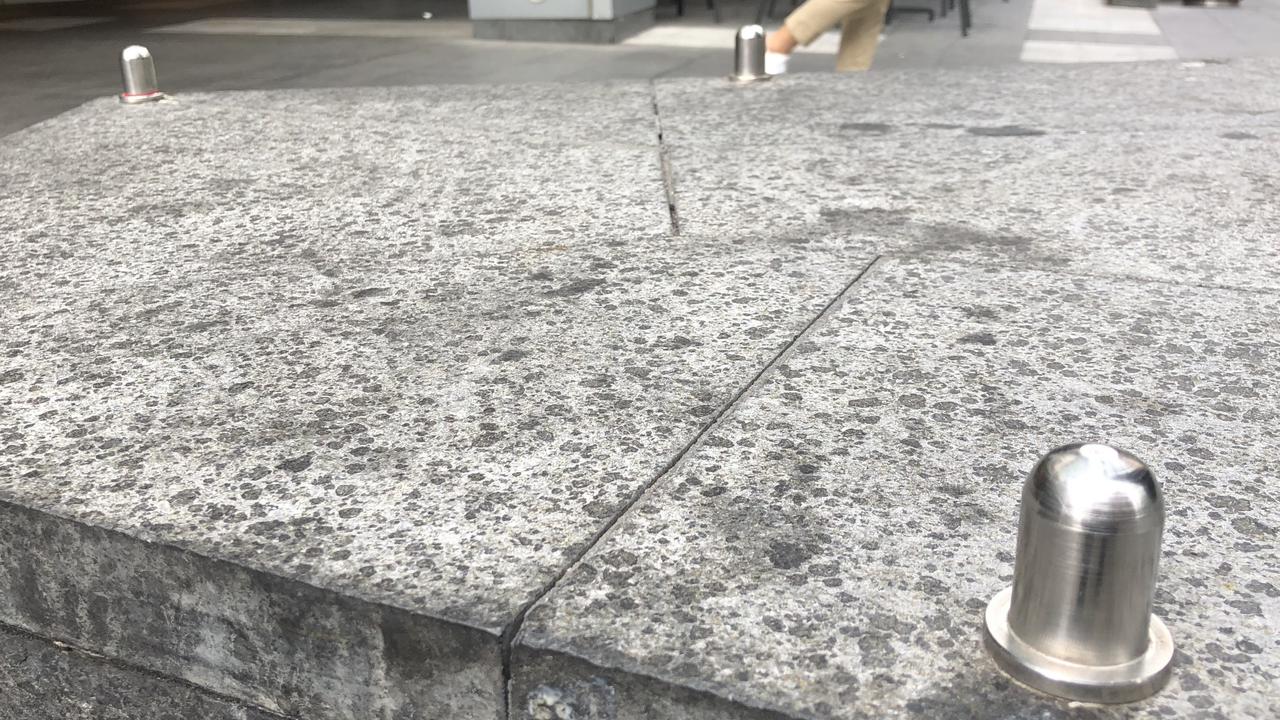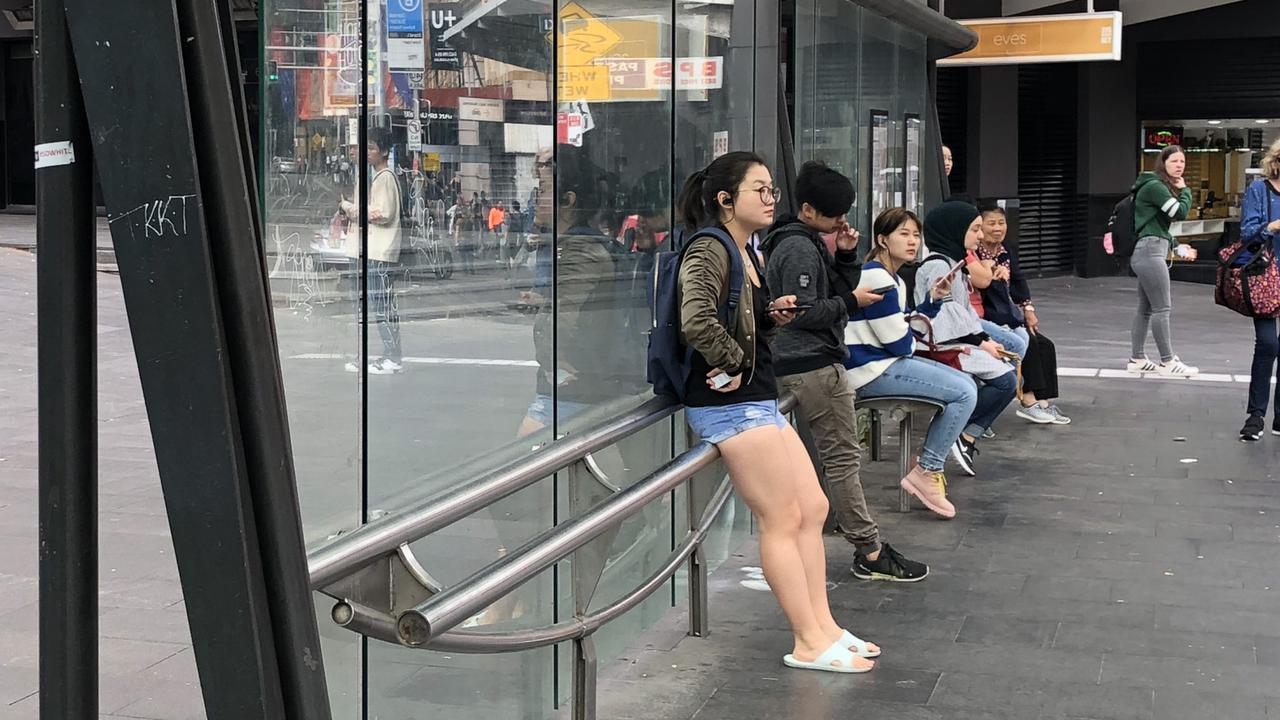Unsettling ‘hostile architecture’ taking over our cities
YOU may not have noticed but our cities are littered with ingenious, unsettling structures designed to prevent “undesirables”.
IT’S the mantra of the modern city — increased urban space and pedestrian friendly areas suited to meandering over motoring.
But our cities are also being reshaped in a more insidious way. Almost unnoticed, our public spaces are increasingly designed to exclude certain types of people deemed undesirable.
“It’s hidden, it’s camouflaged, but its role is to prevent homeless people or people doing activities deemed undesirable from loitering,” Kim Dovey, a professor of architecture and urban design at the University of Melbourne told news.com.au.
It’s called “hostile architecture” and it’s very subtle. It’s the spikes on raised surfaces to prevent people from lying down, narrow perch-style seats on bus stops to do much the same thing, raised bars on benches to discourage skateboarding and automatic sprinkler systems that just happen to be placed where people without anywhere else to go bed down for the night.

‘IT’S PRETTY AWFUL’
Comedian Tommy Little raised the issue on The Project on Tuesday night to coincide with Youth Homelessness Matters Day.
“They’re doing this to try and make our homeless invisible so they just bugger off somewhere else,” Little said.
“It’s a pretty awful thing when you not only ignore the people most vulnerable but you actually target them, that’s not the society we want to live in.”
Proponents of behaviour-changing architecture use the term “defensive” rather than “hostile” claiming it safeguards spaces for everyone to use.
However you term it, Prof Dovey said the methods used often had a double function — a seemingly innocuous obvious function but then a secondary and more controlling aim
“It’s the keep off the grass signs which on one level are designed to protect grass but it’s also to stop people lying on it, as if grass is primarily about looking at rather than lying on,” he said.

BUM-PROOF BENCHES
It’s also the benches which now commonly have heavy and protruding metal arm rests.
“Originally they were called ‘bum proof benches’ that make it difficult for people to sleep on. It’s a means of cleansing the public space.”
News.com.au took a trip around Sydney’s Central station and found examples of hostile architecture were numerous.
Within the station concourse were benches with metal arm rests; the busy bus stops at Railway Square didn’t have seats but narrow metal rails to rest on, metal nodules protruded from ledges and, in a park outside an office block, benches that would have provided a flat surface featured raised ledges making lying down impossible.

HOSED DOWN
Australia wide 116,000 people are homeless, a rise of 14 per cent from the last census in 2011. Around 850 people are homeless in the relatively small City of Sydney local government area, more than 300 of those get their shut eye on the streets.
One of those is Ray (who didn’t want us to use his last name) who became homeless eight years ago following his mother’s death.
He told news.com.au, he had direct experience of hostile architecture.
“I’ve only just got of hospital with pneumonia because I had to sleep on the damp floor because of the bars on the benches,” Ray said.
On one occasion, in Melbourne, the 60-year-old said he was beneath the iconic Princes Bridge when a sprinkler system was turned on to wash out the rough sleepers.



‘DELIBERATE AND MEAN’
In 2015, the King St Arts Centre in Perth turned off a hose directed at a stairwell after it emerged its sole purpose was deter the homeless.
The organisation said that it had a “duty of care” towards the centre’s users and staff who were being “accosted”, reported Perth Now.
Whatever the method used, Ray doesn’t see any of them as positive.
“It’s deliberate and mean. No one uses the arm rest on the benches anyway, it’s just to stop you lying down and it affects your health.”
Prof Dovey said the issue was complex because public spaces needed to be used by everyone.
“In part, it’s a result of a growing corporatisation of public space where the image of the public space becomes linked to the branding of the state and the city.”
The huge new Queens Wharf development in Brisbane CBD, the centrepiece of which is a new casino, has been criticised for its explicit use of hostile architecture from the get go.
A report submitted as part of the development application for the site stated: “Furniture installed in the area should have features that minimise anti-social behaviour. This may include discreet solutions on seating and low walls that minimise use for skateboard tricks, and fixed armrests that prevent sleeping on the furniture.”

Some examples of adapting the urban environment have been plain barmy. In 2008, Rockdale City Council in southern Sydney installed pink lights in its car parks and pumped out hits from crooner Barry Manilow with the hope it would deter teenagers from loitering as they would be appalled by the dagginess of the overall ambience.
Fast food outlets used hard seating hoping that after 10-15 minutes sore bums will itch to move on — just enough time to polish off a Big Mac and large Coke.
Prof Dovey said it made the urban environment more “brutal”. But it didn’t always have the desired outcome.
“People find ways around it. I’ve seen places designed not to be sat on but people bring cushions to overcome it. Metal lugs to stop skateboards often end up being the very challenge skate boarders are looking for to make things more interesting,” he said.
If cities want to stop people sleeping out on the streets, however, they should provide more accommodation and effective solutions, not make it more difficult for desperate people, Prof Dovey said.
“You may push people to sleeping in more dangerous situations and places where they could be assaulted,” he said.
“My view is public space is public space and people have the right to use it in whatever way they choose. Otherwise it’s not really public space at all.”




